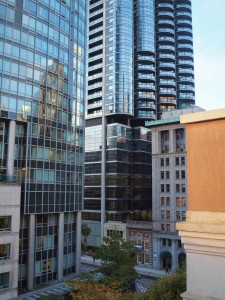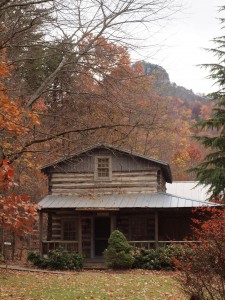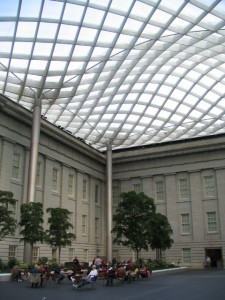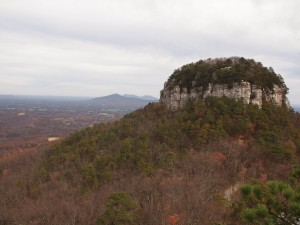
Foster + Partner’s first building in Vancouver, Jameson House, is located in Vancouver’s downtown heritage district and incorporates two registered historic structures.
What do a new Norman Foster skyscraper in Vancouver and a bed & breakfast in the woods of North Carolina have in common? Both have reused existing buildings in manners that may be considered questionable in terms of historic preservation and authenticity. But does anyone care? Does it really matter? And will it help save the world from climate change?
Traveling
One of the terrific benefits of my itinerant lifestyle is the ability to visit an astounding amount of historic sites, glorious architecture and fantastic cities. Earlier this month I spent five days in Vancouver at the invitation of the Vancouver Heritage Foundation. I gave their annual public lecture on the intersection of sustainability and preservation (the presentations can be found here on their website) and provided the opening talk for their Energy Efficiency Workshop. Both presentations generated interesting discussion and I learned (or re-learned) some fascinating information about the differences between Canada (or at least Vancouver) and the US in terms of codes. My next blog will address some of those issues.
The Jameson House Has Landed
I stayed at the historic Vancouver Club, just two blocks from the waterfront and in the heart of Vancouver’s heritage district. And directly across the street from me was the newly completed Jameson House – Foster and Partners first building in British Columbia. This 37 story glass and steel mid-height skyscraper is Foster’s latest contribution to “designing contemporary interventions in historic structures,” such as the Reichstag, the Great Court at the British Museum, the Robert and Arlene Kogod Courtyard at the Smithsonian American Art Museum and the Hearst Building in New York City. Now, I happen to love Foster. The Reichstag, Great Court and the Kogod Courtyard are some of my favorite places anywhere. The Hearst Building, however, is a great mistake as far as I’m concerned on many levels. And sadly, I don’t think the Jameson House rises to the level of the Reichstag or the courtyards. Primarily because its integration of two historic structures, the restored “A-listed” 1929 Ceperley Rounsfell Building and the façade of the “B-listed” Chamber of Mines, is quite uninspired. I actually enjoy the elevation from the east side which is a rather restrained glass and steel image and find the bubbling of the west elevation over the street rather amusing. But the way it meets the street and wraps itself around the heritage buildings looks like an afterthought at best – which to me is what facadectomies always look like.
Moving Tobacco Barns Around

Six 100-year old tobacco barns were converted into luxury cabins for a bed and breakfast in the shadow of Pilot Mountain in Northern North Carolina.
On a similar note, after I returned from Vancouver we took a ride up to Pilot Mountain State Park which is about 20 miles north of our house in Winston-Salem, NC. We had heard that there was a bed and breakfast in the shadow of the Pilot Knob that was developed from several moved tobacco barns. We did indeed find it and were thrilled with its rustic simplicity. The Pilot Knob Inn Bed & Breakfast has six 100 year-old tobacco cabins that have been converted to cabins with whirlpools, fireplaces and luxury furnishings. Does this tell us anything about the history of the area? No, not really. It is not even clear where the barns came from.
Authenticity and Sustainability
The preservationist in me cringes at the lack of historic authenticity in both of these projects. But the traveler can admire pieces of both, although I find the Tobbaco Barn Inn much more acceptable. There is no use for tobacco barns any more (thankfully) and the reuse of their materials and form certainly is better than dismantling them or sending them to the land fill. And I’ve already checked into a weekend stay in them.
Now the Jameson on the other hand makes me question whether it would have been better and cleaner to just dismantle the Chamber of Mines façade (from preservation viewpoint). Yes, both historic structures are still located in their original commercial location, although most of the Mines building is now gone. I suspect the Jameson received air rights and was able to build more and/or higher since it “saved” two registered structures. The Jameson is very proud of its “green” credentials which read as follows:

The Jameson House at street level with the facade of the Chamber of Mines immediately adjacent to it and incorporated in it.
- The “green” project carefully restores, and integrates, two heritage buildings to create a mixed-use building with retail and restaurants on the bottom three floors, eight floors of office space, and then followed with 25 levels of condominiums.
- The building will generate its own power and have a water recycling system.
- Structure was designed to LEED Gold standards.
- Plans include full restoration of the A-listed 1921 Ceperley Rounsfell Building and retention of the front facade of the B-listed 1929 Chamber of Mines.
- The building features Vancouver’s first cogeneration plant, which is powered by bio-diesel.
- The building’s exterior form and design of the facade have been determined by the direction of prevailing winds as well as solar exposure.
- Photovoltaic cells are employed on the south facade where there is maximum exposure to sunlight.

The Kogod Courtyard at the American Art Museum in Washington, DC by Foster + Partners is a far more successful integration of the contemporary with the historic than the Jameson House.
Does It Matter?
So, these musings take me back to the beginning of this essay where I asked does it matter? Of course it is absolutely better to reuse existing buildings and materials, thereby avoiding the impact of new construction. But in both cases, moving tobacco barns and cleansing the history out of two lovely commercial buildings, it is doubtful whether any real life cycle costs were saved. Helping climate change? Hmm, questionable there too. And both of these projects are just on the edge of what I’d consider real preservation. Certainly there’s very little authenticity remaining. The scale, context and cultural continuity of both have been changed significantly. But the tobacco barns are lovely and the heritage structures in Vancouver do still remind us of what was once there. And if you don’t look up, you might not realize what’s towering above them anyhow. I’m sure we can have sustainability and authenticity, just not in these projects.
And if you’d like to “subscribe” or follow this blog, True Green Cities, please sign up through the “Subscribe” button at the bottom left of this page. You’ll receive a daily recap when new blogs are posted.

